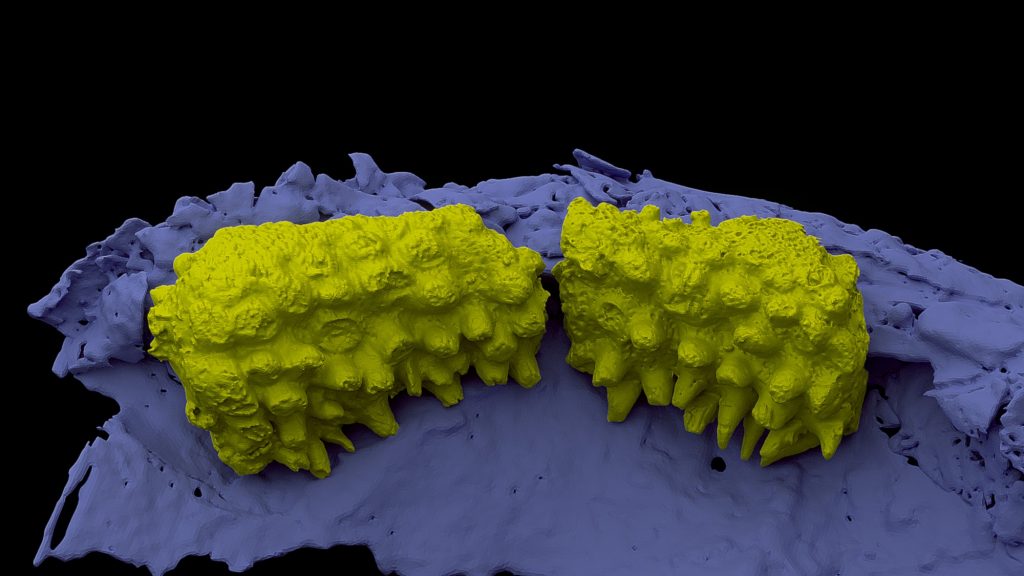 In the two extant jawed vertebrate groups, bony fish (and their descendants the land animals) and sharks, new teeth usually develop on the inner side of the old ones. Sharks have no bones and their teeth do not attach to the cartilaginous jaws, whereas in bony fish and land animals, the teeth are always attached to jaw bones. This diversity raises many questions about the origin of teeth. Until now, researchers have focused on fossils of a group of armoured fish, the arthrodires, the only stem jawed vertebrates in which teeth were known. They struggled to understand how they could have evolved into the teeth of modern vertebrates, as arthrodire teeth are so different in position and mode of tooth addition.
In the two extant jawed vertebrate groups, bony fish (and their descendants the land animals) and sharks, new teeth usually develop on the inner side of the old ones. Sharks have no bones and their teeth do not attach to the cartilaginous jaws, whereas in bony fish and land animals, the teeth are always attached to jaw bones. This diversity raises many questions about the origin of teeth. Until now, researchers have focused on fossils of a group of armoured fish, the arthrodires, the only stem jawed vertebrates in which teeth were known. They struggled to understand how they could have evolved into the teeth of modern vertebrates, as arthrodire teeth are so different in position and mode of tooth addition.
A team of scientists from the Charles University, Uppsala University, the European synchrotron ESRF in Grenoble, Natural History Museum in London, and the National Museum in Prague (Valéria Vaškaninová as a lead author) turned to the acanthothoracids, an early fish group closely related to the common ancestor of jawed vertebrates. The very finest of them come from the Prague Basin, but due to their fragility they have never been investigated in detail. The researchers used synchrotron microtomography at the European synchrotron, the world’s brightest X-ray source, which allowed them to visualise the internal structure of the fossils in 3D, including unexpected well-preserved dentitions. Follow-up scans at higher resolution visualized the growth pattern and perfectly preserved cell spaces inside the dentine.
Like arthrodires, the acanthothoracid dentitions are attached to bones. This indicates that bony fish and land animals retain the ancestral condition, whereas sharks are specialized. In other ways, acanthothoracid dentitions are fundamentally different from those of arthrodires. Like sharks, bony fish and land animals, acanthothoracids only added new teeth on the inside. Even though acanthothoracids are among the most primitive of all jawed vertebrates, their teeth are far more like modern ones than arthrodire dentitions. Their jawbones resemble those of bony fish and seem to be directly ancestral to our own.
Vaškaninová V., Chen D., Tafforeau P., Johanson Z., Ekrt B., Blom, H., Ahlberg P.E. (2020): Marginal dentition and multiple dermal jawbones as the ancestral condition of jawed vertebrates. Science 369, 211-216. (DOI)








